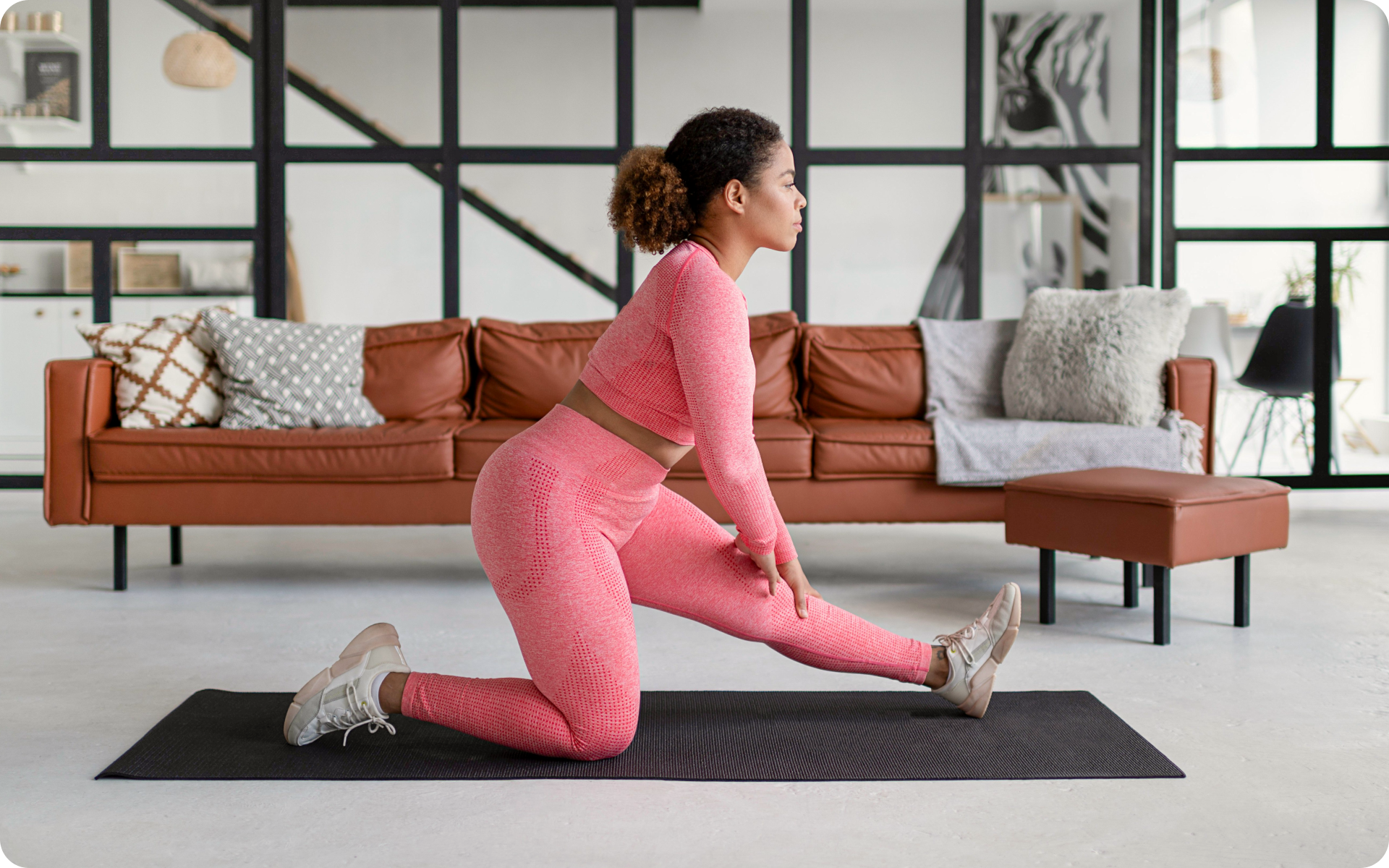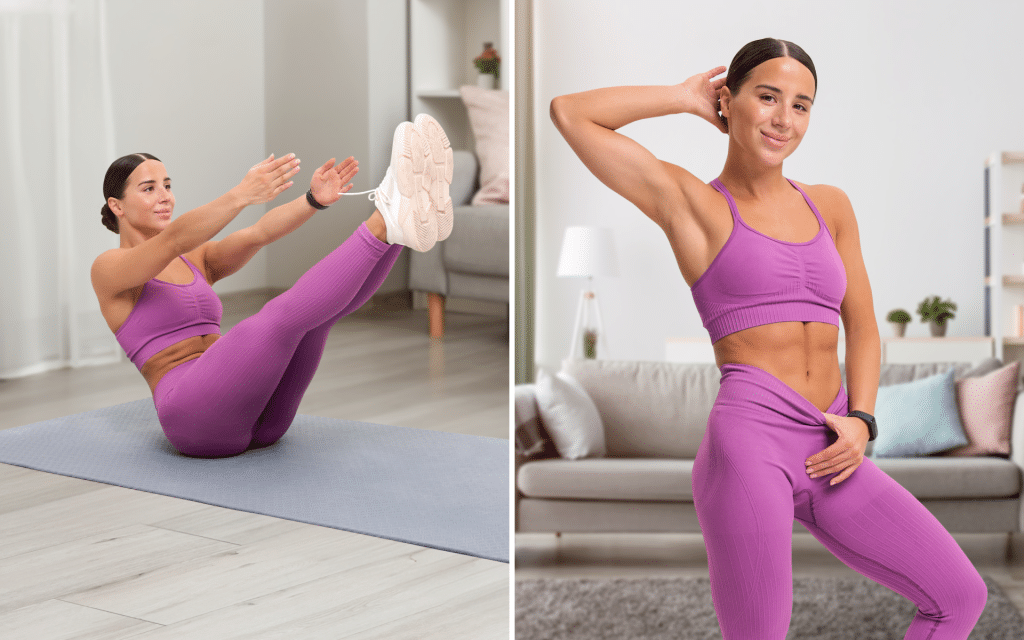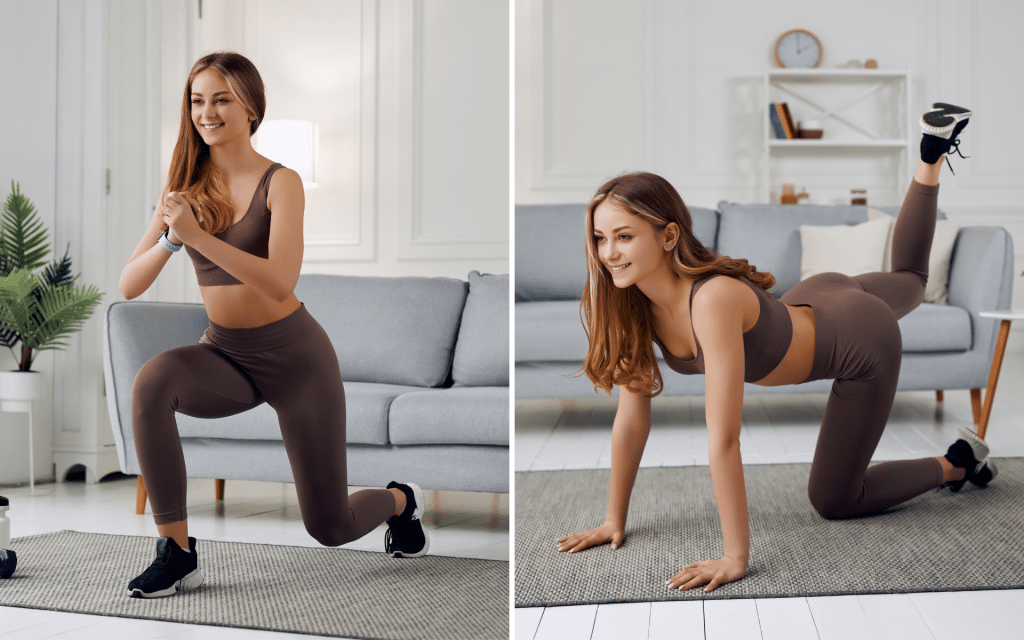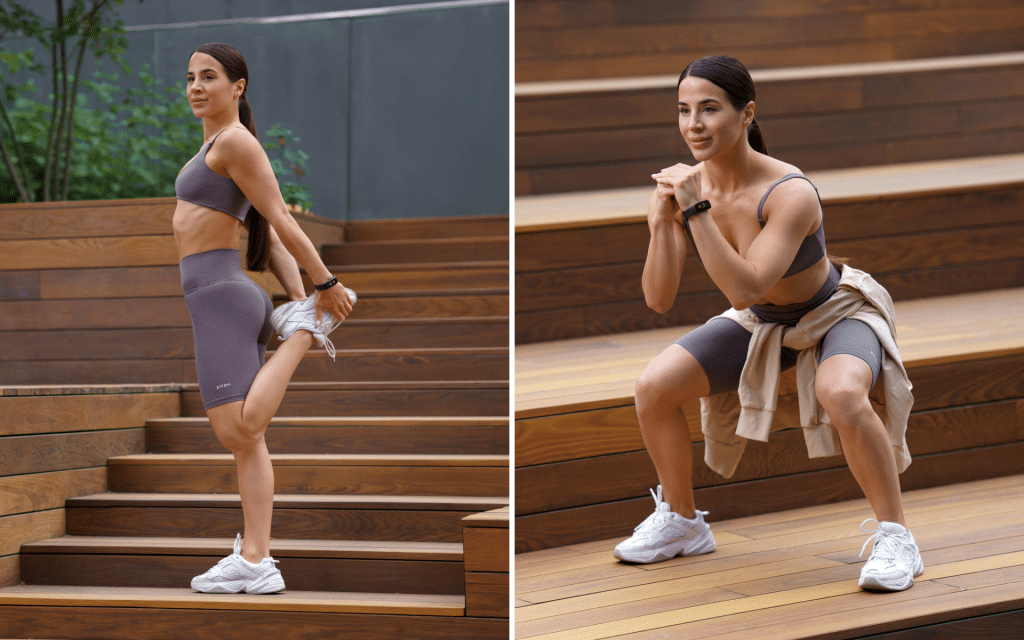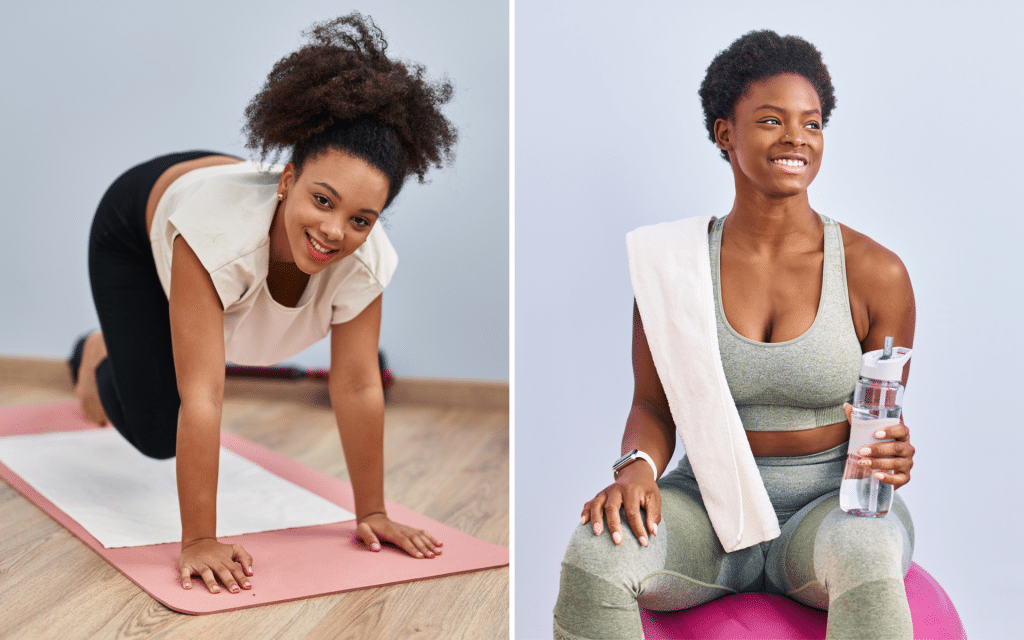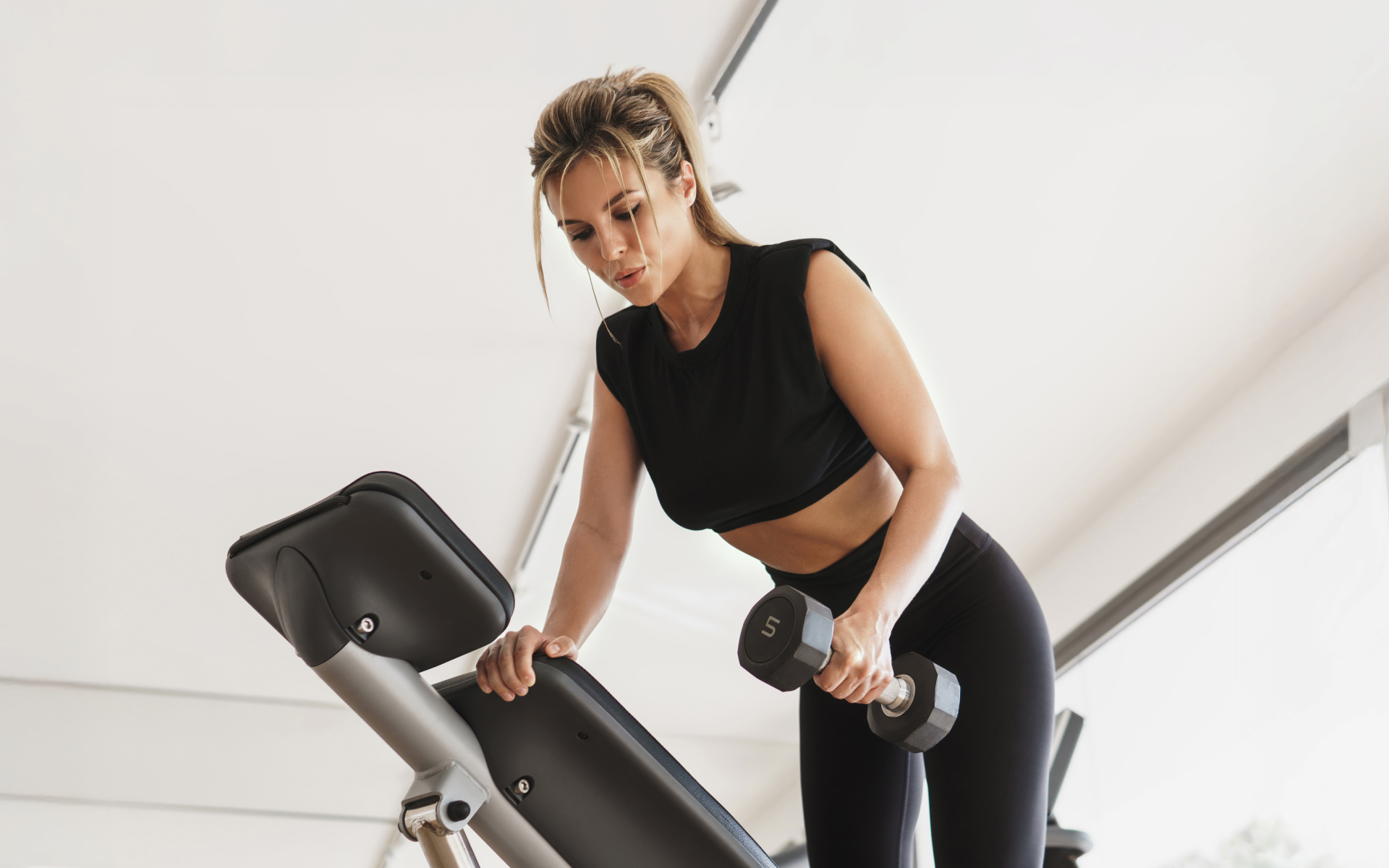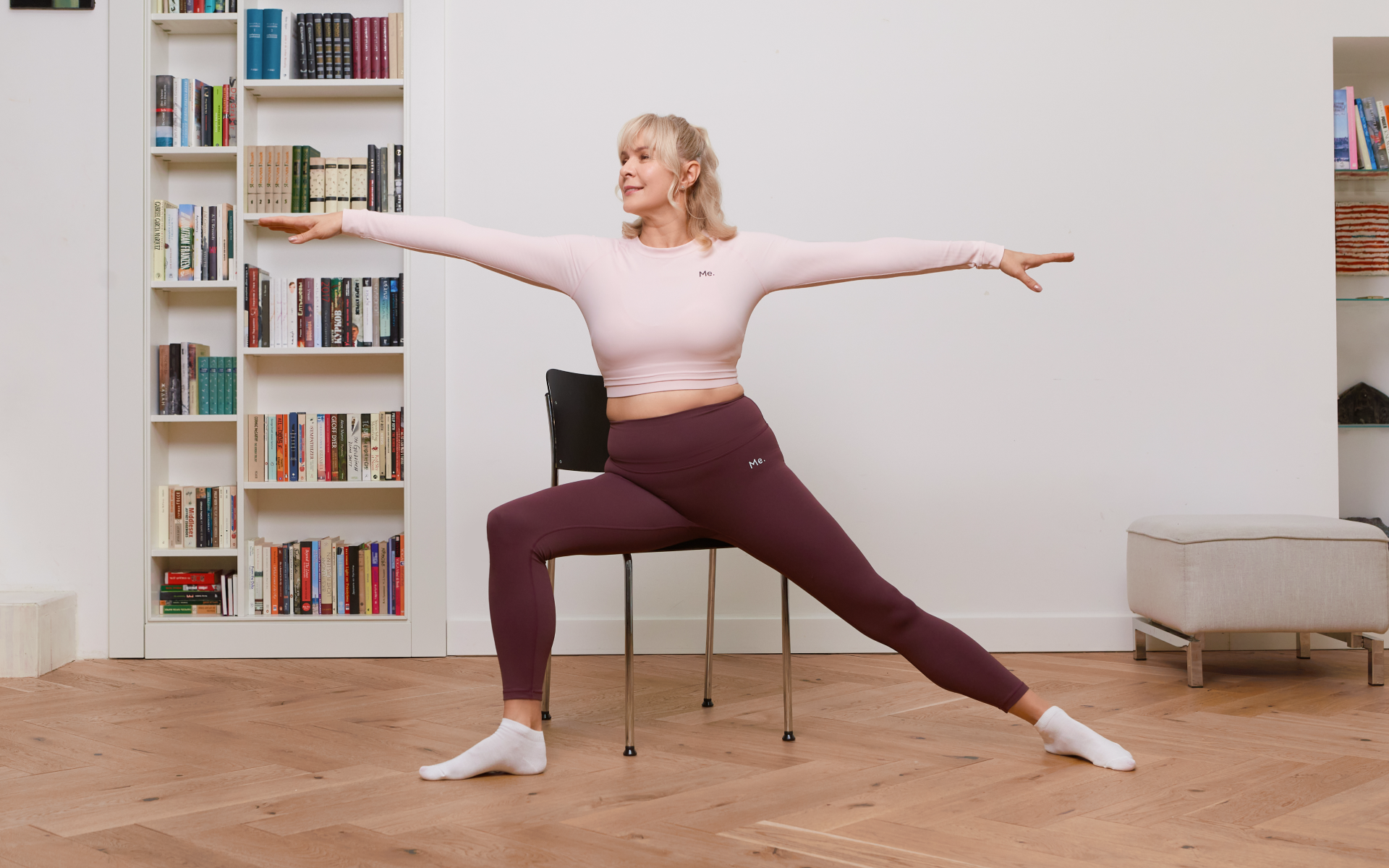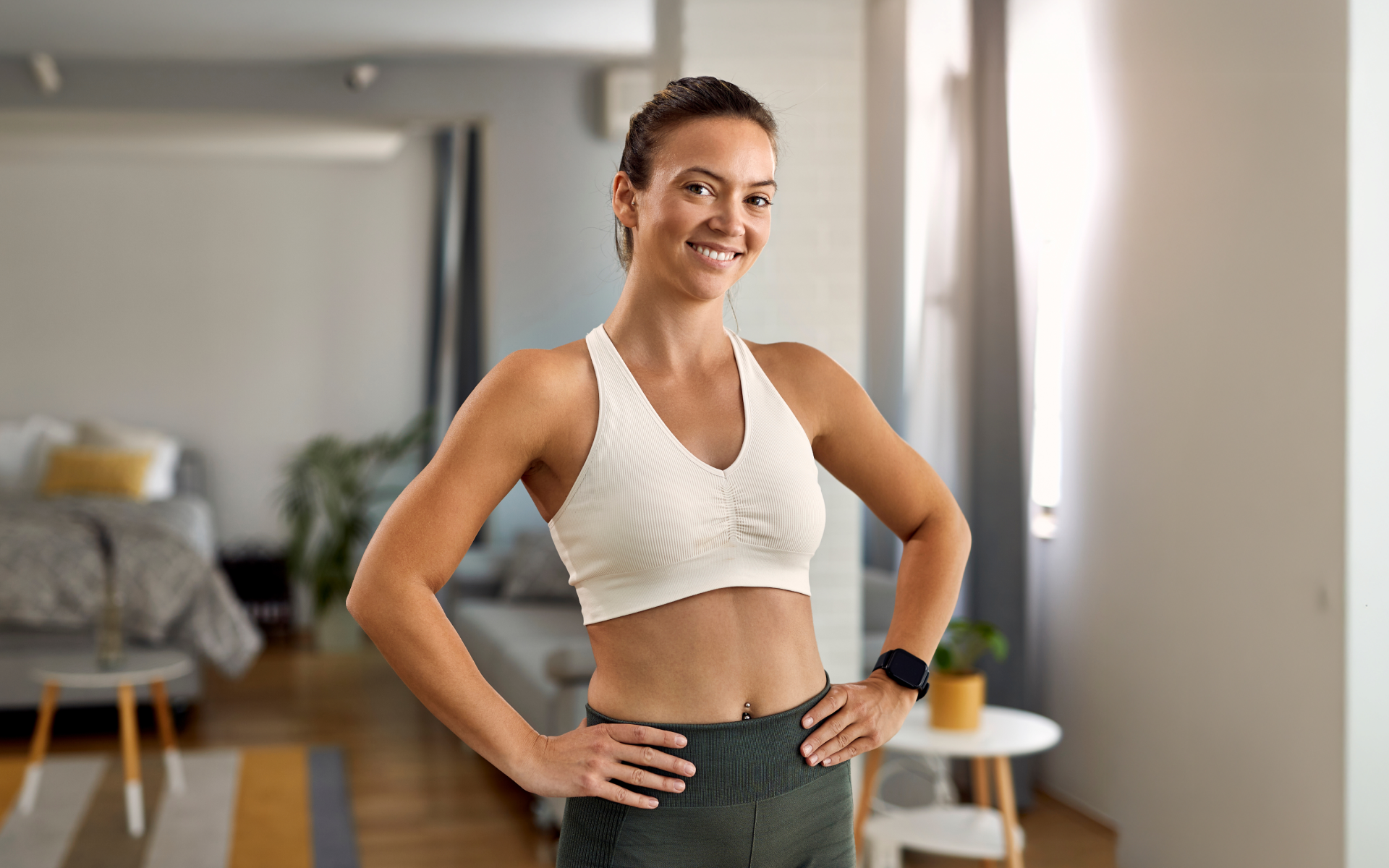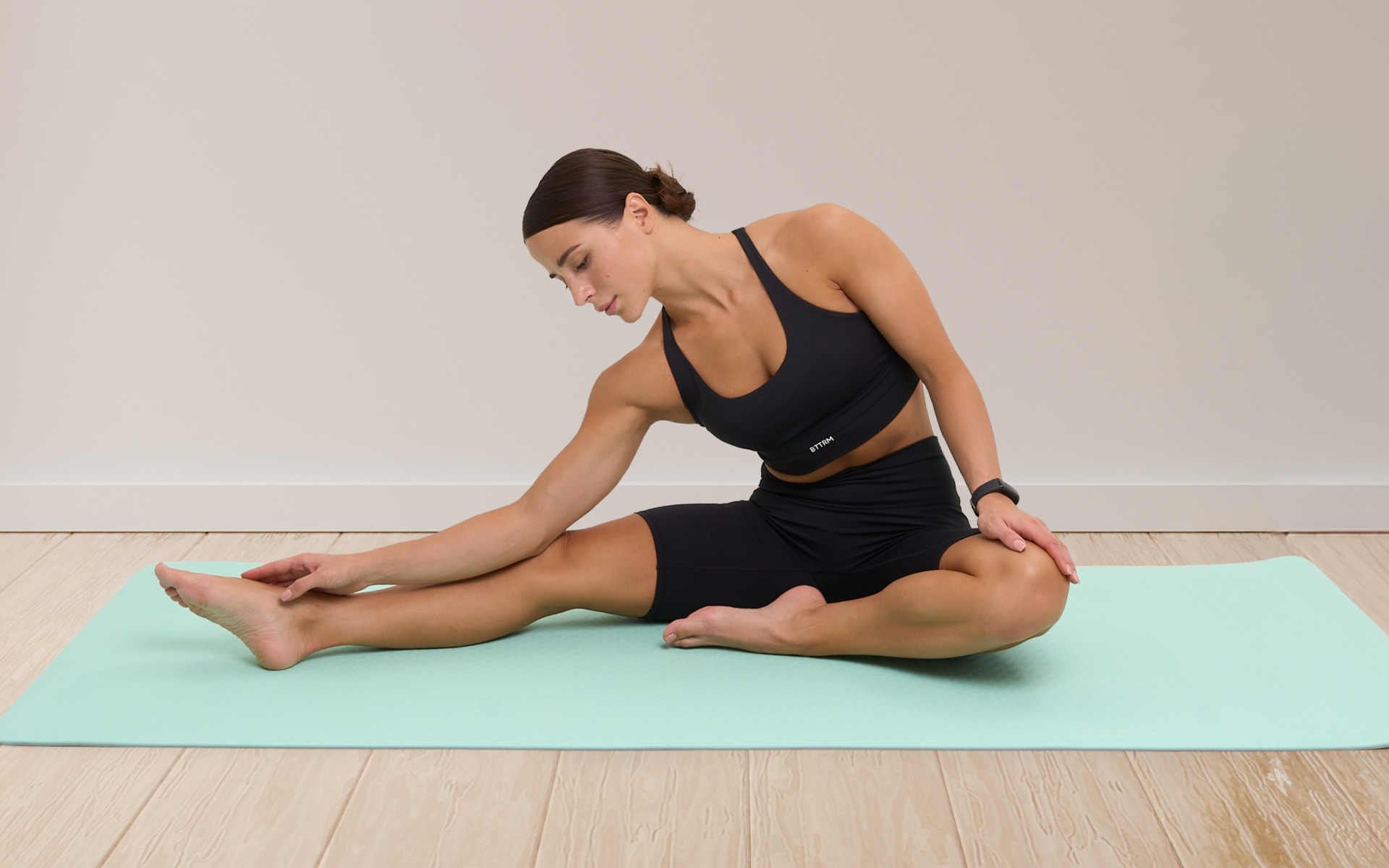Struggling to figure out what to do at the gym for lasting weight loss? You’re not alone.
Many women feel unsure about where to start or worry if their efforts will pay off.
If this is you, you’ve probably been asking, “How should I start gym to lose weight?”
The truth is, weight loss isn’t just about burning calories.
It’s about finding the right balance of exercise, nutrition, and habits supporting your long-term health. Quick fixes and crash dieting won’t cut it, but you can see steady progress with the right plan.
We designed this plan to give you a structured weight loss gym routine female beginner-focused.
It’s simple, effective, and rooted in science. By combining workouts with smart nutrition and consistency, you’ll build strength, burn fat, and develop habits that create lasting results.
What Is A Safe Weight Loss Gym Routine Females Can Follow?
A well-balanced weight loss routine focuses on building strength, burning fat, and preserving lean muscle mass. For women aiming to lose weight effectively and sustainably, an upper/lower body split 4 days a week offers an ideal balance of intensity and recovery.
A beginners gym workout female weight loss plan provides excellent results when you do the following:
- Pair these workouts with 20 minutes of Zone 2 cardio after each session to enhance fat-burning.
- Zone 2 cardio is a low-intensity exercise performed at roughly 60-70% of your maximum heart rate (1), where you can hold a conversation but still feel like you’re working.
Here’s a sample weight loss gym routine for females:
Upper Body Days (Day 1 & Day 3)
- Incline Dumbbell Bench Press – 3 sets of 10-12 reps
- Bent-Over Dumbbell Rows – 3 sets of 10-12 reps
- Overhead Dumbbell Press – 3 sets of 10-12 reps
- Cable Tricep Pushdowns – 3 sets of 12-15 reps
- Alternating Dumbbell Bicep Curls – 3 sets of 12-15 reps
- Face Pulls (with cable or resistance band) – 3 sets of 12-15 reps.
Lower Body Days (Day 2 & Day 4)
- Barbell Back Squat – 3 sets of 8-10 reps
- Romanian Deadlifts (RDLs) – 3 sets of 10-12 reps
- Hip Thrusts (Barbell or Dumbbell) – 3 sets of 10-12 reps
- Walking Lunges (with or without weights) – 3 sets of 12-15 reps per leg
- Seated Leg Curls (machine) – 3 sets of 12-15 reps
- Standing Calf Raises – 3 sets of 15-20 reps
After completing these strength training exercises, finish with 20 minutes of Zone 2 cardio. Options include walking on an incline treadmill, cycling moderately, or using the elliptical.
Reasons why BetterMe is a safe bet: a wide range of calorie-blasting workouts, finger-licking recipes, 24/7 support, challenges that’ll keep you on your best game, and that just scratches the surface! Start using our app and watch the magic happen.
Step-by-Step Instructions For Each Exercise
Incline Dumbbell Bench Press
- Lie on an incline bench, holding a dumbbell in each hand at chest level.
- Press the dumbbells upward while keeping your elbows slightly angled out.
- Lower them slowly back to the starting position to complete one rep.
- Focus on controlled movement to engage your chest and shoulders.
Bent-Over Dumbbell Rows
- Hold a dumbbell in each hand and hinge at the hips, keeping your back flat.
- Pull the dumbbells toward your sides, squeezing your shoulder blades together at the top.
- Lower the weights with control, maintaining good posture throughout.
Overhead Dumbbell Press
- Hold dumbbells at shoulder height with palms facing forward.
- Press the weights overhead until you fully extend your arms.
- Slowly return to the starting position. Keep your core engaged for stability.
Cable Tricep Pushdowns
- Grab the cable bar or rope attachment with palms facing down.
- Start with your elbows tucked close to your sides.
- Push the handle or rope downward until you fully extend your arms.
- Slowly return to the starting position.
Alternating Dumbbell Bicep Curls
- Stand tall with dumbbells in hand, arms at your sides.
- Curl one dumbbell toward your shoulder while keeping your other arm steady.
- Lower it back down and switch arms. Maintain controlled motions.
Face Pulls
- Attach a rope to a cable machine at chest height.
- Grab the rope with both hands and pull it toward your face, leading with your elbows.
- Squeeze your shoulder blades tightly, and release them slowly.
Barbell Back Squat
- Set a barbell on a squat rack at shoulder height. Position it across your upper back and shoulders.
- Step back and lower yourself into a squat, keeping your chest up and knees over your toes.
- Drive through your heels to return to standing.
Romanian Deadlifts
- Hold a barbell or dumbbells in front of your thighs, feet shoulder-width apart.
- Hinge at your hips, keeping your back straight as you lower the weights down your legs.
- Stop when you feel a stretch in your hamstrings, then return to standing.
Hip Thrusts
- Sit on the ground with your upper back resting against a bench and a barbell positioned over your hips.
- Push through your heels to lift your hips and squeeze your glutes at the top.
- Lower back down in a controlled manner.
Walking Lunges
- Step forward with one leg, lowering your back knee toward the ground.
- Keep your torso upright and your front knee aligned over your ankle.
- Alternate legs as you walk forward.
Seated Leg Curls
- Adjust the leg curl machine so your thighs rest comfortably against the pad (This tip will vary depending on the type of leg curl machine you use).
- Flex your knees and curl the weight down.
- Slowly return your legs to the starting position.
Standing Calf Raises
- Stand on the edge of a raised platform or step, with your heels hanging off.
- Push through the balls of your feet to lift your body upward.
- Lower your heels below the platform level for a full stretch.
We designed this routine to target all major muscle groups, promoting fat loss while maintaining strength. Stick to this plan, pair it with a nutrient-dense diet, and stay consistent to see lasting results.
Read more: Do Wall Sit Exercises Work For Belly Fat?
Is The Gym Good For Weight Loss For Ladies?
Yes, the gym can be a powerful tool for weight loss. For example, the routine we’ve shared above is a two-pronged approach that combines strength training and cardio.
Each plays a unique role in helping you shed fat while maintaining overall health.
Strength Training Builds Muscle
Lifting weights isn’t just about getting stronger; it also helps you lose fat.
Muscle is metabolically active, meaning it burns more calories than fat, even when resting. The more muscle you have, the higher your resting metabolism (2)—how many calories your body burns to keep you alive.
Compound exercises (like squats, deadlifts, and rows) target multiple muscle groups and give you the most bang for your buck. Isolation exercises (like bicep curls or tricep pushdowns) fine-tune specific areas. Together, these build lean muscle, shaping your body over time (3).
Don’t worry about “bulking up”—women naturally produce much less testosterone than men, so strength training is more likely to lead to a toned, athletic look.
Cardio Boosts Calorie Expenditure
Cardio workouts increase your heart rate and help burn calories during and after exercise. Zone 2 cardio, where you exercise steadily and moderately, is particularly effective for fat-burning (1). It keeps your body aerobic, using fat as its primary fuel source.
HIIT (high-intensity interval training) sessions, on the other hand, burn calories quickly and increase your post-workout calorie burn (4, 5).
When you combine cardio with strength training, you create a highly effective calorie deficit. A calorie deficit is when you burn more calories than you consume, which is crucial for weight loss (6). Where strength training builds the foundation, cardio accelerates the process.
How Can A Girl Lose Weight At The Gym?
Losing weight at the gym requires a balanced and consistent approach.
It’s not just about sweating it oot during workouts—it’s about building a sustainable lifestyle.
Step 1: Follow A Structured Workout Plan
Stick to a routine that combines strength training and cardio.
Strength training builds muscle, which increases your metabolism (2).
Cardio can help to burn extra calories and improve endurance.
Aim for a mix of these each week, like the upper/lower split mentioned earlier.
Consistency is key to progress, so prioritize showing up regularly.
Step 2: Create A Calorie Deficit
Weight loss happens when you burn more calories than you consume.
Track your food intake to ensure you eat fewer calories than your daily needs.
Focus on nutrient-dense, whole foods like:
- Lean proteins
- Whole grains
- Vegetables
- Fruits
Avoid crash diets—they harm your metabolism and energy levels (7).
Step 3: Learn Proper Exercise Technique
Good form is critical for results and injury prevention (8).
Take time to learn how to perform each exercise correctly. If unsure, ask a certified trainer or watch reputable educational videos.
Start with lighter weights and gradually increase the load as you gain strength and confidence.
Step 4: Prioritize Zone 2 Cardio
Include 20-30 minutes of Zone 2 cardio after strength sessions or rest days (9).
This type of moderate-intensity cardio relies on fat for fuel (1), an efficient way to support fat loss without overtaxing your body.
Step 5: Make Recovery A Priority
Recovery is just as important as workouts.
Sleep at least 7-8 hours per night to allow your muscles to repair and your body to recharge. Incorporate rest days and gentle activities like stretching or yoga to stay active while avoiding burnout.
Step 6: Stay Consistent
Progress takes time. Focus on making small, sustainable changes rather than chasing quick fixes. Celebrate non-scale victories, such as gaining strength or improving endurance, to stay motivated.
Combining these steps creates a strategy supporting fat loss and long-term health.
The gym is a powerful tool, but your habits outside the gym—like sleep, stress management, and good nutrition—complete the equation. Small, consistent changes lead to significant results over time.
What Gym Exercise Burns The Most Body Fat?
Fat loss relies on total calorie burn and consistency over time.
However, specific exercises are efficient for calorie expenditure.
Compound movements—squats, deadlifts, or bench presses—use multiple muscle groups. Using multiple muscle groups means compound movements burn more calories than isolation exercises. They also build strength and muscle, boosting your metabolism over the long term (3,10).
High-Intensity Interval Training (HIIT) is another excellent option.
HIIT alternates between short bursts of intense exercise and recovery.
It burns calories quickly, and studies show it increases post-workout calorie burn due to excess post-exercise oxygen consumption (EPOC) (5).
Cardio can also have a significant impact. Running, rowing, and cycling at moderate to high intensity can burn many calories during a session.
Even the best workout won’t lead to fat loss if you’re inconsistent.
Fat loss results from a calorie deficit achieved through exercise and diet.
Pick activities you enjoy instead of focusing on finding the “perfect” exercise.
You’re more likely to stick with them.
Read more: PR in Fitness: How to Achieve It
Which Gym Routine Is Best For Female Weight Loss?
The best gym routine for weight loss and toning females is the one that suits your needs.
We’re all different. Fitness levels, lifestyle, goals, and even exercise preferences vary from person to person. A routine that works for someone else might not work for you.
To stick with it, your plan must fit your schedule, suit your abilities, and motivate you.
A customized approach also prevents burnout and overtraining.
You’re less likely to commit if a routine feels too demanding or you’re bored.
The goal is to find a balance, challenging yet sustainable.
Building Your Routine
Start by setting clear, realistic goals. Do you want to lose fat, gain strength, or improve overall fitness? Your workout plan should reflect these objectives.
Include strength training and cardio for maximum impact.
Strength training helps preserve muscle while in a calorie deficit. Cardio boosts fat burn and calorie output. Adjust the intensity and frequency based on what feels manageable.
Don’t forget rest days. They allow muscles to recover and help you maintain energy levels. Overtraining can lead to frustration and plateauing.
BetterMe: Health Coaching app helps you achieve your body goals with ease and efficiency by helping to choose proper meal plans and effective workouts. Start using our app and you will see good results in a short time.
Focus On Enjoyment
Enjoyment drives consistency. If you hate running, don’t force yourself onto the treadmill. Try cycling, swimming, or group fitness classes instead.
If lifting weights feels intimidating, start with lighter loads or resistance machines.
The more you enjoy your routine, the easier it will be to stick with.
The Bigger Picture
A gym routine is just one piece of the puzzle. Pair it with a healthy diet, good sleep, and stress management. Weight loss happens through a combination of small, sustainable habits over time.
The 4/30/10 method involves walking on a treadmill for 30 minutes at a 4% incline and a 10% pace (measured in speed units set on the treadmill). It’s a low-impact cardio routine designed to increase calorie burn, improve heart health, and build endurance over time. This workout is accessible for most fitness levels. The 4-2-1 workout plan typically refers to a weekly workout structure. It includes 4 days of strength training, 2 days of cardio-focused exercise, and 1 day of rest or active recovery. This approach balances muscle-building and calorie-burning activities while giving the body time to recover. Girls can gain weight in the gym, but this is usually in muscle rather than fat when paired with strength training and a calorie surplus. Building muscle gives a leaner, more toned appearance and improves overall body composition. Weight gain can also occur if calorie intake exceeds calorie expenditure. Burning 1000 calories daily through exercise is challenging and depends on factors like body weight, fitness level, and workout type. High-intensity cardio, interval training (HIIT), and longer-duration activities like running, cycling, or swimming are effective. Achieving this level of calorie burn consistently may require combining exercise with an active lifestyle.Frequently Asked Questions
What is a 4/30/10 method workout to lose weight?
What is the 4-2-1 workout plan?
Can girls gain weight in the gym?
How can I burn 1000 calories a day?
The Bottom Line
Weight loss at the gym is achievable with the right approach.
Balancing strength training and cardio can burn calories and build muscle for a stronger, leaner body. Customizing your routine to fit your goals and preferences ensures consistency, which is vital for long-term success.
Remember, it’s not about perfection but building sustainable habits you can stick with.
DISCLAIMER:
This article is intended for general informational purposes only and does not serve to address individual circumstances. It is not a substitute for professional advice or help and should not be relied on for making any kind of decision-making. Any action taken as a direct or indirect result of the information in this article is entirely at your own risk and is your sole responsibility.
BetterMe, its content staff, and its medical advisors accept no responsibility for inaccuracies, errors, misstatements, inconsistencies, or omissions and specifically disclaim any liability, loss or risk, personal, professional or otherwise, which may be incurred as a consequence, directly or indirectly, of the use and/or application of any content.
You should always seek the advice of your physician or other qualified health provider with any questions you may have regarding a medical condition or your specific situation. Never disregard professional medical advice or delay seeking it because of BetterMe content. If you suspect or think you may have a medical emergency, call your doctor.
SOURCES:
- Quantifying differences in the “fat burning” zone and the aerobic zone: implications for training (2009, nih.gov)
- Increasing muscle mass to improve metabolism (2013, nih.gov)
- Resistance Training with Single vs. Multi-joint Exercises at Equal Total Load Volume: Effects on Body Composition, Cardiorespiratory Fitness, and Muscle Strength (2017, frontiersin.org)
- Effectiveness of high-intensity interval training for weight loss in adults with obesity: a randomised controlled non-inferiority trial (2019, nih.gov)
- Effects of exercise intensity and duration on the excess post-exercise oxygen consumption (2006, nih.gov)
- Effects of aerobic and/or resistance training on body mass and fat mass in overweight or obese adults (2012, journals.physiology.org)
- Optimal Diet Strategies for Weight Loss and Weight Loss Maintenance (2020, nih.gov)
- Prevent Injuries with Proper Form During Workouts (2021, nus.edu.sg)
- A Systematic Review on the Effectiveness of Active Recovery Interventions on Athletic Performance of Professional-, Collegiate-, and Competitive-Level Adult Athletes (2019, journals.lww.com)
- 5 Benefits of Compound Exercises (2016, acefitness.org)
